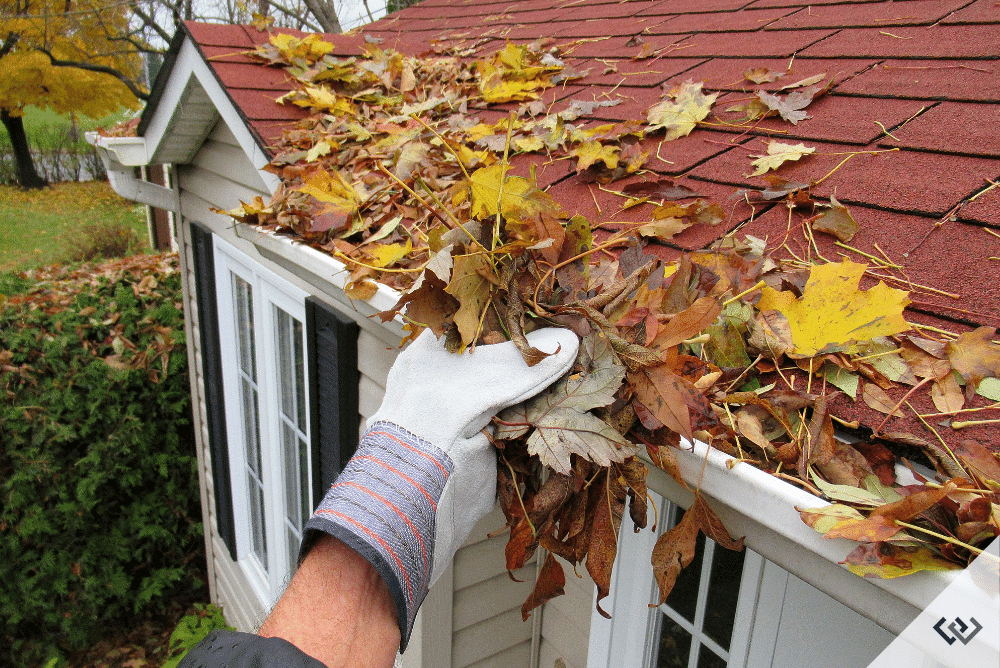Fall is flying by and now’s the time to prepare your home for winter weather. The last thing you want is to have your holiday fun interrupted by a disastrous leak or an emergency repair. To enjoy your cozy home with true peace of mind, complete a winter home maintenance checklist.
Weatherproof Windows & Doors
One of the easiest ways cold weather seeps into your home is through windows and doors. These leaks significantly reduce your home’s energy efficiency and bring an unwelcome chill. By fixing these gaps, you can increase your energy savings anywhere from 5% to 30%.
To keep the cold at bay, seal any leaks with weatherstripping or caulking both from the inside and outside. Adding a door sweep is another great way to keep drafts out and warm air inside. If you live in an older home with extra drafty windows and doors, it may be time for a few upgrades and replacements. Consider investing in double-pane windows and new insulated doors.
Clean Chimneys and Fireplaces
Gathering around your fireplace or wood-burning stove may be enjoyable for warmth and ambiance. But make sure they are safe and ready for use this winter. Most importantly, to prevent fires and carbon monoxide poisoning, have your chimney professionally inspected and cleaned. This must be a high-priority task on your winter home maintenance checklist. The Chimney Safety Institute of America recommends having your chimney inspected once a year to ensure critters haven’t turned it into a condo, and to clear away any debris or blockages. If you have a gas fireplace, a professional can also inspect gas lines and vents and make needed repairs. Investing in a chimney sweep is best for your health and safety in the long run. And remember to close the fireplace damper when it’s not in use to keep out drafts and save energy.
Check Your Furnace
Your furnace is the heart of your home’s heating system and you want to make sure it’s running smoothly throughout the winter. Take time to check the furnace filter and install a new one if it’s dirty. ENERGY STAR recommends changing the filter every three months. So if you can’t remember the last time you replaced it, now is a great time. ENERGY STAR also suggests having your furnace checked by a professional each year. Fall is the perfect time to do this before heating experts are swamped with cold weather-related emergencies. Also, you’ll feel better knowing everything is in working order.
Inspect Your Gutters and Roof
Once the trees have shed all their leaves, it’s time to clear your gutters. Your home’s gutters play a key role in draining water away from your house. November can be a pretty rainy month on Bainbridge Island and throughout our region, so you may want to move this task to the top of your list. To avoid basement leaks and flooding, make sure your downspouts point away from the foundation.
While you’re up there investigating your gutters, it’s good to take a look at the roof as well, but only if you can do so safely. If not, hire a professional to help because the last thing you need is a ladder-related accident. Inspecting the roof is especially important for homeowners who will be away from their property for a significant amount of time. It’s best to find any damage that could cause leaks before you go, otherwise, an unwelcome and expensive surprise might be awaiting you upon your return.
Protect Your Pipes
Cold weather is hard on pipes, especially pipes that aren’t insulated within the walls of your home. For extra cold winter days and nights, make sure all interior pipes are wrapped and insulated to prevent freezing. Burst or cracked pipes often cause serious water damage, it’s best to be proactive to prevent a water damage emergency.
If you have a waterfront home that serves as a getaway, then it’s important to take even more precautions. Disconnect all hoses from outside pipes and drain the hoses to prevent them from freezing and breaking. If you turn off the heat while you’re away, then proceed with similar steps indoors. As you turn off the heat, also turn off the main water supply and open all faucets. Next drain all hoses connected to your dishwasher, washer, and any other appliances. Another option is to keep your heat on at a minimum of 55 degrees to keep your pipes in good working order.
Prime Your Sump Pump
The sump pump is crucial to keeping your home dry during extremely wet weather by pumping excess groundwater away from your home. Make sure yours is ready to do its job to prevent water damage. There are two easy ways to test if your sump pump is working. One way is to pour water in until the float rises and see if it kicks into action and starts removing water. If it doesn’t, then it’s best to call in an expert. Another way is to do the classic on-and-off method by simply unplugging and plugging the pump back in. If the sump pump doesn’t turn back on, it most likely needs to be replaced or repaired.
Prepare for a Winter Storm
Lastly, make sure you’re ready for the unexpected. You never know what winter might throw your way. We may be in for a winter storm with power outages or another Snowmaggedon. Regardless, it’s good to have extra supplies on hand, including flashlights, batteries, bottled water, and firewood. Take time to assemble an emergency kit and prepare a family evacuation plan. The Weather Channel created a great winter storm preparation list, which includes checking fire and carbon monoxide alarms. It’s always best to be prepared. That way, if something does happen, you’ll be covered.
After you’ve completed your winter home maintenance checklist, you’ll be able to relax and enjoy the holiday season.

 Facebook
Facebook
 X
X
 Pinterest
Pinterest
 Copy Link
Copy Link
